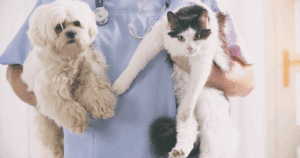

Anxiety in dogs and cats is an increasingly common problem that both Veterinarians and animal behaviourists are treating these days, and can significantly impact their well-being if left unaddressed.
That’s why understanding the signs of anxiety in dogs and cats is essential for providing them with the care and support they need.
It’s been estimated that over 40% of dogs and cats are now suffering from stress or anxiety. Just like humans, stress and anxiety in dogs and other pets can impact on their immune system and/or lead to behaviour problems and other issues.
Some of the common signs of anxiety dog owners should be looking out for include the subtle ones like licking their lips, flicking of the tongue and yawning, then of course there is trembling, panting, avoidance behaviours like hiding or seeking constant reassurance from their owners.
It might also include excessive barking, whining, or howling, especially when left alone, perhaps not eating until you are around or toileting inside the home – which are often signs of separation anxiety.
As a trainer, I also see a lot of issues such as fear aggression, barking, digging and destructive chewing as a coping mechanism for their distress.
For cats, signs of anxiety in cats may include excessive grooming, especially to the point of causing hair loss or skin irritation. They may urinate or defecate outside the litter box, vocalize more than usual, or exhibit changes in appetite and sleep patterns.
Generally cats are really good at hiding a lot of their stress, which means it often goes unnoticed until it is too late, and it can often lead to recurrent health problems like urinary tract disease.
Additionally, cats may become more withdrawn or aggressive when they’re feeling anxious, preferring to isolate themselves from people or other pets.
It’s important to note that the signs of anxiety can vary from one pet to another, and some pets may exhibit more subtle indicators of distress. These behaviours are usually part of the fight, flight or freeze response. And while the trigger may seem harmless to us, like a loud sound or a moving object, your pet may see it as a serious threat.
Triggers can include fireworks, thunderstorms, unfamiliar places, separation, or even a small change in routine. And while anxiety might start mild, like sensitivity to noise, over time, it can develop into separation anxiety or more generalised fear.
That’s why early intervention is key. The sooner we act, the easier it is to manage.
Firstly, urban density means more dogs and cats are forced to live in close proximity, which is not what would be occurring if they were in the wild, and so this isn’t ideal.
The next big issue is people working long hours leaving them alone all day. Again, this is not something dogs in particular are designed for. They are pack animals and most crave human company and interaction.
Many are also not getting adequate levels of mental and physical stimulation, exercise or socialisation that they need to help keep behaviour problems at bay.
Separation anxiety is a big issue that many dogs face due to this and also owners reinforcing their anxiety, whilst things like car travel can also be a trigger.
There are a range of treatments for anxiety in dogs and cats, depending on their individual triggers and situations.
Providing a safe and comfortable environment, regular exercise, mental stimulation, and establishing a consistent routine can all help reduce stress and anxiety in dogs and cats.
Many behaviour problems including reactivity/aggression, barking, separation anxiety and other problem behaviours are also likely to require working with a trainer or vet behaviourist, as medication may be required, as well as a counter-conditioning behaviour modification training plan.
A full environmental enrichment plan for dogs is likely to be suggested to ensure their mental and physical needs are met. Ensuring a cat has plenty of exercise and enrichment is also vital, which you can read about HERE.
For some natural treatments, Zylkene is a gentle, natural supplement that helps pets stay calm in challenging situations. It works well alongside behaviour modification training, and can be used with anti-anxiety meds if prescribed by your vet.
For more persistent or long-term situations, Zylkene Plus provides extra support. I use this with Vindi, and also keep the chews or capsules handy for both him and Darcy during short-term stress — like vet or grooming visits.
Other supports like Adaptil for dogs and Feliway for cats, which release calming pheromones, or pressure garments like ThunderShirts, can also help reduce anxiety.
Don’t just expect your pet to get over it. Anxiety is incredibly distressing and just gets worse if left unaddressed.
Chat to your vet or a qualified behaviourist, and look for Zylkene and Zylkene Plus at your local Petstock store or online. And to learn more about Zylkene and how it works, visit Zylkene.com.au
About the Author: Lara Shannon is a certified dog behaviourist and trainer, pet food nutrition specialist, Executive Producer and Host of Pooches at Play on Channel 10 and editor of Poochesatplay.com. Lara also runs her own dog training business in Melbourne’s Bayside area and is the Author of World of Dogs and Eat, Play, Love Your Dog

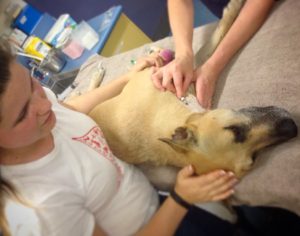
Dog blood donations save lives
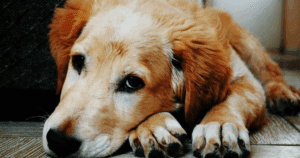
Treating Noise Phobia in dogs and cats
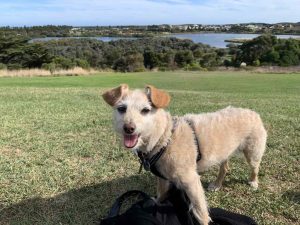
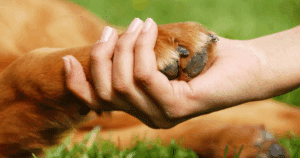
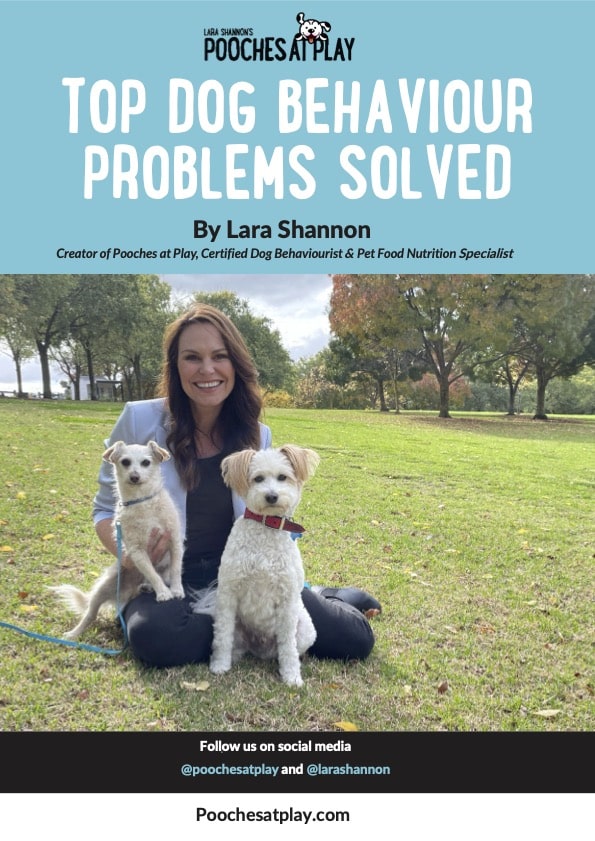


Get your paws on Lara Shannon’s best selling books ‘Eat, Play, Love (your dog) and World of Dogs.
Available in Australia, USA, UK and Canada.